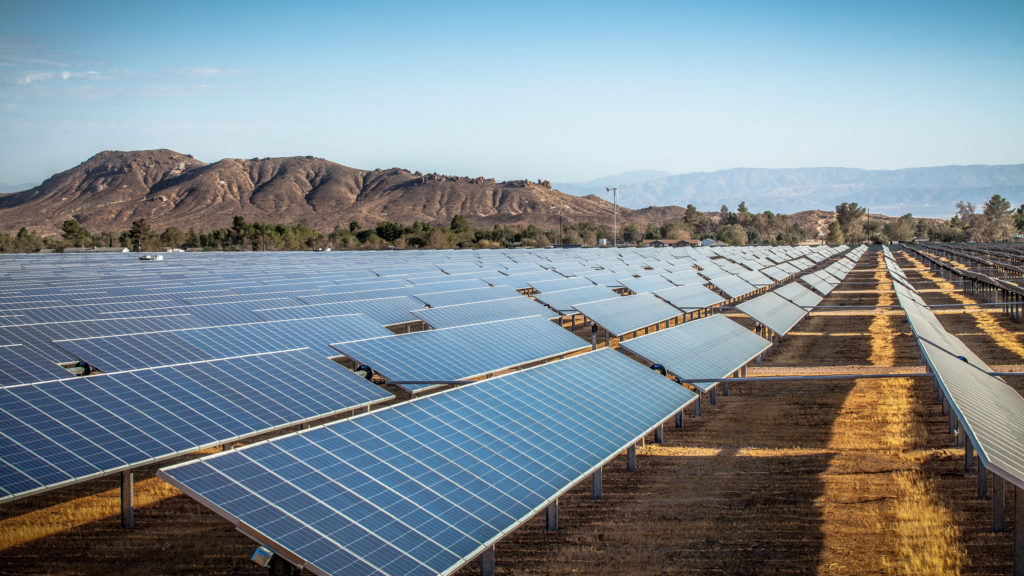U.S. Solar Industry Awaits Treasury Guidance on Domestic Content Rules
Share

A 10% bonus tax credit is at stake, and plenty want it watered down so they can be rewarded for using imports.
The last Congress passed and the Biden administration signed into law a series of big-ticket items meant to reshape America’s industrial footprint. One of them was the Inflation Reduction Act (IRA), which offers American consumers and developers significant incentives for purchasing and using energy equipment – whether it’s an electric vehicle, heat pump for your home, or solar panels for your roof – that’s American-made.
The logic behind it is simple and straightforward: Join domestic manufacturing and burgeoning clean tech industries at the hip, and they’ll both grow together.
Now everyone is waiting for the government to specify which solar panels will qualify as Made in America. And a government update could come as soon as this week.
This is typical of the way laws roll out. A new rule is created, and then the government issues guidance on how everyone can comply with that rule. People want rules for how to follow the rules. That’s exactly what’s going on for solar panel companies, who say they have not yet seen an IRA-caused explosion in sales because the U.S. Treasury Department hasn’t issued the guidance on the solar panel credit related to domestic manufacturing.
And they’re getting antsy, because we’re not talking about small potatoes! That credit is substantial. From a Reuters article spelling it out:
The IRA contains a 30% tax credit for renewable energy facilities, with the domestic content bonus worth an additional 10% of the project cost. The IRA contains a number of such bonuses, including for building projects in disadvantaged communities and for adhering to certain labor standards.
“The average project size that we do is $300 (million) or $400 million. So you’re talking about a lot of money,” George Hershman, CEO of solar contractor SOLV Energy, said in an interview.
Just to spell it out further: 10% of a $300 million project is a $30 million tax credit. With money like that one line, these companies want the government’s guidance made clear so they can plan accordingly.
But there’s a split in the U.S. solar industry regarding what that guidance should say.
Solar companies trying to ramp up manufacturing in the United States want the guidance to say that only solar equipment manufactured here should count as American-made. They say unless Treasury’s guidance is strict, the industry will remain dominated by Chinese-made imports. The Chinese government for decades heavily subsidized its solar industry. As a result, China holds a dominant position in solar manufacturing – and it runs much of that manufacturing through Xinjiang where it’s credibly accused of using forced labor on its production lines.
On the other hand are solar companies more interested in solar’s development, who argue that solar panels that are simply assembled in the United States should qualify for the IRA domestic content credit. They argue that tying actual manufacturing to the credits is too much of a drag on development. But weak guidance would resign the domestic content rules meant to boost American industry to an afterthought.
Here’s what Alliance for American Manufacturing President Scott Paul wrote to U.S. Treasury Secretary Janet Yellen last fall:
As the Treasury develops guidance regarding domestic content requirements for Bonus Credit amounts, it must adopt robust origin standards that recognize upstream material inputs and supply chain components and subcomponents that are produced in the United States. The adoption of permissive origin standards or loopholes, on the other hand, would not be appropriate as doing so would undermine the entire policy – making the Bonus Credit attainable without the use of domestically produced iron, steel, and manufactured products. Permissive origin standards and loopholes would eliminate the intended outcome of the Bonus Credit incentive, which is for developers of clean energy projects to use iron, steel, and manufactured products that were produced by American workers throughout the domestic supply chain.
Emphasis added by me, because the possibility that “permissive origin standards” might make their way in shouldn’t be shrugged off. As stated before: This is a burgeoning industry, and these fast-growing companies hold a lot of political sway. For example, just last year solar developers mounted a formidable lobbying campaign to smother a Commerce Department investigation into solar panel imports that were circumventing longstanding duties on solar goods made in China. And while they weren’t successful – the investigation was completed and, surprise, found that many of these imports were being rerouted to disguise their origin and avoid duties – it complained loudly enough that the Biden administration froze any new tariffs on solar imports for two years.
There are folks in Congress cranky about this, enough so that they’re trying to do an end-around on that tariff freeze. And just today they’ve been warned by the White House that their bill will catch a President Biden veto if they pass it!
Suffice it to say: The Biden administration is trying to strike a delicate balance between ambitious clean energy goals and its support for American manufacturing that has been equally as strident, and you can see that playing out as it balances the politics and policy around solar panels. We’ll be watching closely when Treasury releases its guidance.
